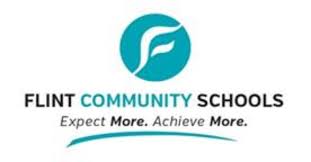By Harold C. Ford
Amid great uncertainty, Flint Community Schools (FCS) begin a new year in August amidst great uncertainty. Sources of uncertainty emanate from international, national, state, and local levels of our pandemic-plagued world.
Already weighted down by numerous challenges, FCS is moving into the 2020-2021 school year beset by an erratic pandemic, an unpredictable federal government, indeterminate revenue sources, the shortcomings of remote learning, resurgent staff attrition, and continuing changes in leadership.
Pandemic pandemonium:
The coronavirus is, of course, international in scope. “The global spread of the virus has overwhelmed health systems, and caused widespread social and economic disruption,” asserted documents from the World Health Organization as early as April 14, 2020.
 COVID-19 may have originated in China, but it has reached genuine pandemic level having touched tropical isles in the South Pacific, visited communities above the Arctic Circle, and found its way to Flint. The spread of the virus is not limited by political boundaries or ideologies.
COVID-19 may have originated in China, but it has reached genuine pandemic level having touched tropical isles in the South Pacific, visited communities above the Arctic Circle, and found its way to Flint. The spread of the virus is not limited by political boundaries or ideologies.
As of July 24, the number of coronavirus cases worldwide was just shy of 16 million; the number of deaths from the virus was nearly 641,000. U.S. cases exceeded 4.2 million; the number of deaths is approaching 150,000.
In the last two weeks, case counts have risen in 37 states, including Michigan. Nearly 85,000 cases and 6,400 deaths have been reported in Michigan. In the week prior to July 24, there were an average of 658 cases per day, a 36 percent increase from two weeks earlier.
In Genesee County, the average daily cases per 100,000 was 7.6. Two weeks ago, that number was 3.3.
Children testing positive:
As schools prepare to start the new school year, new evidence is emerging that children might be more susceptible to the virus than at first believed.
“Nearly one-in-three children tested for the new coronavirus in Florida has been positive,” according to a report by the South Florida Sun Sentinel, “and a South Florida health official is concerned the disease could cause lifelong damage even for children with mild illness.”
Dr. Alina Alonso, Palm Beach County’s health department director, warned county commissioners that much is unknown about long-term health consequences for children who catch the virus.
Florida’s statistics also show the percentage of children testing positive is much higher than the population as a whole.
Prez pushes to reopen schools:
No matter the knowledge provided by science and medicine, President Donald Trump has lobbied for the reopening of schools on a face-to-face/brick-and-mortar basis as indicated by a July 8 Twitter message: “I disagree with the @CDC [Center for Disease Control] gov on their very tough & expensive guidelines for opening schools. While they want them open, they are asking schools to do very impractical things. I will be meeting with them!!!”
The CDC subsequently delayed the release of school reopening guidelines after being publicly criticized by Trump. Then, on July 24, the CDC posted new guidelines that “come down hard in favor of opening schools, saying that children don’t suffer much from coronavirus, are less likely than adults to spread it, and suffer from being out of school.”
The administration also moved to suppress information about the spread of the virus. “The Trump administration’s decision directing hospitals to bypass (the CDC) and send their data directly to the Department of Health and Human Services met a furious backlash from public health experts…”.
Dr. Vin Gupta, pulmonologist and NBC News medical contributor, told MSNBC’s The Eleventh Hour on July 23, “Let’s call it what it is. The CDC has lost its independence.”
Further, Trump threatened to cut off federal funds from school districts that do not bring students back to the buildings. While public school systems rely primarily on state and local revenues, socioeconomically challenged school districts—with a higher percentage of special needs students and children living in poverty, like Flint—would be hurt the most from a cutoff of federal funding.
Many school systems to start the year virtual/online:
No matter the pressure from the Trump administration, many of the nation’s approximate 13,000 school systems, including Flint, are opting to begin the school year on a virtual/online basis.
In Michigan, the Lansing and Ann Arbor school systems recently announced that their students will start out the new school year on a virtual/online basis. Gabrielle Lawrence, Lansing school board president, said the pandemic is not under control in Michigan. Ann Arbor school officials and health experts said the COVID-19 case rate in Washtenaw County has increased over the previous six weeks.
The two largest school systems in California, Los Angeles and San Diego, cited similar concerns about surging coronavirus infections as the basis for their decisions. Together, the two systems enroll some 825,000 students.
“Eleven of the 15 largest U.S. school systems,” according to USA TODAY, “are in communities adding COVID-19 cases at more than three times the rate they were in the two weeks ending May 1.”
Phase 4 a precarious position:
No matter how Flint and other Michigan school systems begin the new school year, their plans are precarious. The state is currently in a Phase 4 status in Michigan Governor Gretchen Whitmer’s plan—MI Safe Schools: Michigan’s 2020-2021 Return to School Roadmap—to reopen schools. The plan has six “phases” from 1, the worst pandemic status, to 6, the best.
As explained by FCS Superintendent Anita Steward at a July board of education meeting, should the pandemic worsen in Michigan and Whitmer declare a Phase 1, 2, or 3 status under the state’s Return to School Roadmap, then all schools will be closed to face-to-face/brick-and-mortar instruction.
If the pandemic numbers improve, and a Phase 5 or 6 status is declared, then students are to return to face-to-face/brick-and-mortar instruction.
State aid also uncertain:
The tenuousness of federal aid, due largely to the temperamental nature of a chief executive who threatens to cut it, is exacerbated by the added uncertainty of state aid.
Though local school budgets have already been submitted to Michigan’s state government, schools can’t accurately estimate how many students they’ll have due to the pandemic. State aid is allocated based largely on student count.
And it’s very possible that funding to school districts will be cut by the state due to its own revenue shortfalls, the result of a pandemic-plagued economy. Michigan’s governor told the media that Michigan will need federal support.
“The crisis has had serious implications on our budget, and we need federal support if we’re going to get this right for our kids,” Whitmer said.
Teacher trepidations and attrition:
Teacher trepidations about returning to the classroom environment was confirmed by a Michigan Education Association survey of its 120,000 members May 14-22. An overwhelming majority, 87% of the 15,399 educators who answered the survey, said they were concerned about health risks as they consider returning for the 2020-2021 school year.
Almost one-fourth of the respondents said they were thinking about leaving education or retiring earlier than planned. Seven percent said they’d already made the decision to do so.
And at the local level…327 years of experience walk out the door:
At the July 16 board of education meeting, Cassandra Washington, FCS executive director of human resources, announced the departure of 14 more educators—13 retirements and one dismissal—who took with them 327 years of experience in Flint schools.
After Washington’s presentation, Diana Wright, FCS board vice president, asked board members, “Any other questions?” There were none. The board then voted unanimously to accept the departures.
In 2019, 78 educators departed FCS taking with them 1,014 years of experience. FCS scrambled to fill classrooms with substitute teachers, paraprofessionals, administrators, and “guest teachers”—college students completing their certification requirements.
Finding subs to cover vacant classrooms, virtual or otherwise, may be a tough task. Michigan State University’s Institute for Public Policy and Social Research, released a report Aug. 15 that details just how acute the substitute shortage is in Michigan. About two-thirds of 177 school districts reported they have trouble finding enough subs on a regular basis; 64 percent reported that multiple sub positions go unfilled every week.
Virtual/online learning less than ideal:
As many of the nation’s 55 million students anticipate more months of virtual/online instruction, there is emerging evidence that distance learning is inferior to face-to-face/brick-and-mortar instruction.
“In the early 2000s, computer enthusiasts predicted the end of ‘brick-and-mortar’ K-12 schools,” writes John Richard Schrock, a professor of science education at Emporia State University and a former middle and high school teacher. “New digital readers were predicted to totally replace printed books by 2015. And massive open online colleges (MOOCs) would deliver all coursework online and free, replacing university coursework and making college classrooms obsolete a decade ago.”
“None of these predictions came true. Our armed forces kept track of their training dropout rate for high school students who graduated from online high schools; they performed as poorly as GED students who never completed genuine high school.”
A McKinsey and Company report titled COVID-19 and Student Learning in the United States: The Hurt Could Last a Lifetime, as reported by New York Times, finds that learning loss from last school year will worsen for most students, but especially for racial minority children:
“The average student could fall seven months behind academically, while black and Hispanic students could experience even greater learning losses, equivalent to 10 months for black children and nine months for Latinos…”
A working paper from NWEA, a nonprofit organization, and scholars at Brown University and the University of Virginia, found the average student could begin next school year having lost as much as a third of the expected progress from the previous year in reading and half of the expected progress in math.
Administrators and teachers know they’ll have to do some catching up this fall.

New administrative team:
Any catching up at FCS will be led by a revamped lineup of administrators. Several administrative “adjustments” were announced in a July 22 press release by FCS that included:
· Kevelin Jones moved from his principalship at Doyle-Ryder Elementary to assistant superintendent.
· William Chapman was named the new director of operations, the same position he held at Kearsley Community Schools.
· Notoya Coleman was selected to fill the assistant principal position at Southwestern Classical Academy; she moved from her adjunct professor post at Rowan University in Glassboro, New Jersey.
· Daphne Jackson was transferred from her assistant principal and academic engagement positions at Flint Junior High to an acting principalship at Doyle-Ryder.
· Eddie Thomas changed principal positions, moving from Holmes STEM Academy to Eisenhower Elementary.
· Scott Henwood, new to the district, was hired to fill the principal position at Holmes STEM Academy. His experience included teacher and administrative positions at several schools in Michigan and Indiana.
EVM Education Beat writer Harold C. Ford can be reached at hcford1185@gmail.com.


You must be logged in to post a comment.